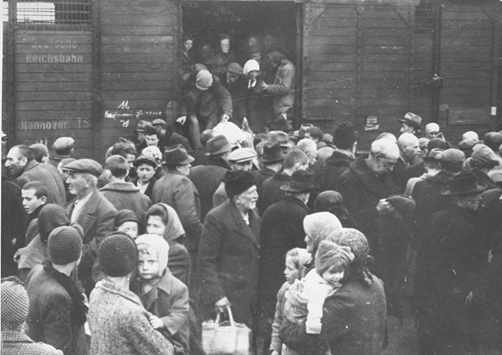
In History: Deportation of Hungarian Jews
By 1943, it was becoming increasingly clear that Germany was going to be defeated in World War II. The German military was in retreat from their failed invasion of the Soviet Union. The leaders of Hungary, members of the Axis Powers, tried to negotiate a separate peace agreement with the Allies. In response, on March 19, 1944, Germany stopped the process by marching in and occupying Hungary. Germany installed new leadership in Hungary, willing to continue the war and willing to deport the Jews of Hungary.

Although, for the moment, Jews in Budapest were safe, just a month after the German occupation began, in April 1944, almost half a million Jews living in rural areas of Hungary were rounded up by Hungarian police and military. They were forced into enclosed ghettos, located in some of the smaller cities. The conditions in these ghettos were dire.
By the middle of May 1944, exactly 80 years ago, deportations of Hungarian Jews began. These deportations were organized and conducted by both German and Hungarian authorities. Adolf Eichmann, the “Nazi deportation expert” oversaw the proceedings.
By the end of July 1944, 145 trains had deported almost half a million Hungarian Jews. For most of them, their final destination was the Auschwitz Birkenau killing center, where the gas chambers were working 24 hours a day. For those few who could still work, they were sent to slave labor camps. The only Jews left in Hungary were in its largest city, Budapest.

In November 1944, the Arrow Cross, Hungary’s fascist, antisemitic regime, ordered the remaining Jews in Budapest into a small area of the city. The large and small ghettos housed almost 70,000 people, in little space, without food, heat or sanitation. At that critical time, the diplomat, Raoul Wallenberg, was working at the Swedish mission in Budapest. He used his government position to issue special passes for some of Budapest’s Jews. The passes claimed that the holders were under the protection of the Swedish government. He also procured buildings in the ghetto for some of the Jewish residents and claimed that they were also under Swedish protection. Through Wallenberg’s efforts, thousands of Budapest’s Jews were saved.
During the time of the deportations from Hungary, there was a “resort” for Nazi officers, administrators, guards and secretaries, located just 18 miles from the Auschwitz Birkenau killing center. One of the SS officers, Karl Hoecker, took photographs from his time there and arranged them in an album. Those photographs show the Nazi staff enjoying their time off, singing, laughing, eating blueberries. The photographs begin in May 1944, at the moment of the first arrivals of the Hungarian deportation trains to Auschwitz Birkenau.
LEARN MORE
- To learn more about the Hoecker album and a Hungarian Auschwitz Survivor, Irene Weiss, watch the following segment which aired on 60 Minutes on Sunday, May 19, 2024. Here There Are Blueberries – Full Episode - Segment begins at 29 minutes in.
- You can also read about the discovery of the photo album and the individuals in the photographs